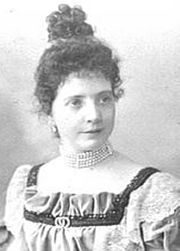Design
Design
Personality
Chart Properties
Your Cross represents the specific theme of your life. This cross embodies your unique potential & the lessons you're here to learn, providing a roadmap to fulfilling your life purpose.
We use the UTC birth time and date to do the calculations required to generate your Human Design chart.
Buy Tokens
Pay as you use, no expiry and no subscription required.Prompt Ideas
Get inspired with some epic prompt ideas.Hippolyte Taine's Biography
French thinker, critic, and historian.
Taine was the chief theoretical influence of French naturalism, a major proponent of sociological positivism, and one of the first practitioners of historicist criticism. Literary historicism as a critical movement has been said to originate with him. Taine is particularly remembered for his three-pronged approach to the contextual study of a work of art, based on the aspects of what he called “race, milieu, and moment”.
Taine’s influence on French intellectual culture and literature was enormous. He had a special relationship, in particular, with Émile Zola. Taine also influenced a number of nationalist literary movements throughout the world, who used his ideas to argue that their particular countries had a distinct literature and thus a distinct place in literary history.
He excelled as a student, receiving a number of prizes in both scientific and humanistic subjects, and taking two Baccalauréat degrees at the École Normale before he was 20. Taine’s contrarian politics led to difficulties keeping teaching posts, and his early academic career was decidedly mixed. He completed a doctorate at the Sorbonne in 1853, his dissertation won him a prize from the Académie française.
In 1864, by a happy decision of Napoleon III, he was appointed to succeed architect Viollet-le-Duc as professor of aesthetics and of the history of art at the École des Beaux-Arts in Paris, where he subsequently lectured for 20 years. This post also gave him a security that favoured his more-protracted scientific studies and helped make the later 1860s a happy and fertile period in his life.
In 1868 he married Mlle Denuelle, the daughter of a well-known architect and artist, by whom he had a son and a daughter.
He died 5 March 1893, Paris.
Link to Wikipedia biography
Your Cross represents the specific theme of your life. This cross embodies your unique potential & the lessons you're here to learn, providing a roadmap to fulfilling your life purpose.
We use the UTC birth time and date to do the calculations required to generate your Human Design chart.






